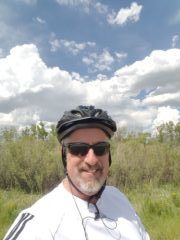“When summer opens, I see how fast it matures, and fear it will be short; but after the heats of July and August, I am reconciled, like one who has had his swing, to the cool of autumn.”
Ralph Waldo Emerson
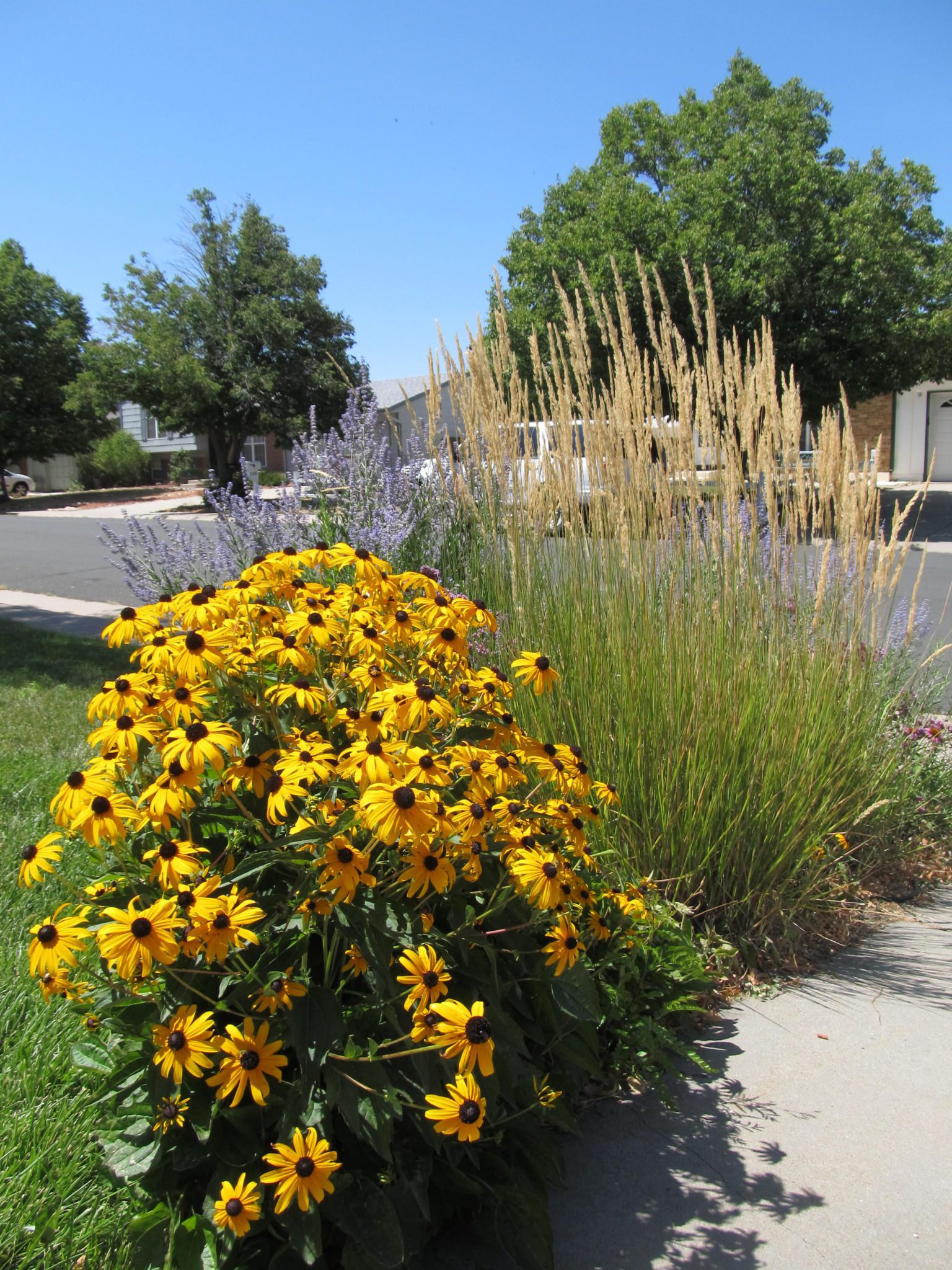
The Sunday of summer:
I have heard it said that August is like the Sunday of summer. There are, I suppose, several ways of viewing this statement. For students and teachers, August signals the end of summer break and the first day of the school year, which can induce a sense of anxiety and unease as the dreaded day draws closer. Very much like the Sunday blues.
For those who love summer, there is a realization that the brightest three months of the year are now behind us, and no matter how many activities are squeezed in (swimming, camping, BBQs, etc.), there’s no way to deny that summer is inexorably drawing to a close and in just a few fleeting weeks it will be a return to the mundane. Also much like the Sunday blues.
As I am no longer a student, and autumn is my favorite season, neither of these views apply to me. Instead, I view August like a weekend that starts off great but then quickly goes downhill. You know the one: on Friday you look forward to the weekend with high hopes and good intentions, and Saturday is everything you could have hoped for. Then you wake up on Sunday and you have no motivation to do anything whatsoever. You mope around the house all day and then go to bed in a funk, dreading getting up to go to work the next day.
That’s what August feels like to me; for the heady exuberance of May and June have long since passed, and as the relentless heat of August takes its toll a malaise overtakes me. The problem is that it’s so hot outside I have no desire to be outside. I now eagerly await the cooler temps of autumn.
August: a month of transition
July and August are a study in contrasts.
Summer in July just seems to hover, like a hawk slowly circling overhead on warm updrafts. The days stay long and hot, the midday sun stands high in the sky and sunlight is as bright as it was on the summer solstice. Summer appears to be unchanging and eternal.
When the calendar flips over to August, not much changes at first. But as the month progresses, changes become ever more apparent; it becomes obvious that the days are getting shorter and the sun sets earlier and earlier every evening. The sun starts to sit lower in the sky and shadows lengthen. The sunlight itself begins to soften and become less intense. When the last day of August arrives, it is quite evident that summer is all but finished and that the arrival of autumn is imminent.
The reason for the difference is simple; the closer the earth gets to a solstice the longer the daylength gets, but the changes to the daylength get smaller (all this being relative: the changes are much more obvious the further you move away from the equator). Conversely, the closer the earth gets to an equinox, the more dramatic the changes to the daylength become. This year for instance, at my latitude, the days only shortened by 45 minutes during the forty-two days (six weeks) from the solstice to the last day of July. That averages out to a little over minute a day difference.
During the month of August, on the other hand, the days will shorten by almost seventy minutes in just 31 days! That’s an average of over two minutes a day, which adds up quickly.
July seems so unchanging because it is unchanging.
Changes in the garden:
Speaking of change, quite a few changes happen in the garden during the month of August; some of these changes are very subtle while others can be quite dramatic.
In the veggie garden, summer crops such as corn, tomatoes, pumpkins and squash (which have spent June and July growing huge) begin to die off. The corn has grown “as high as an elephants eye”, the tomato plants look like small shrubs and the vining plants sprawl all over the ground and over other plants.
But sometime in August, a switch is flipped and the plants divert all their energy into growing seeds. Ears of corn grow large, tomatoes plump up and ripen and pumpkins seemingly get larger by the hour. While there is still much left to be harvested, the plants themselves begin to die off and may look completely dead by the time August comes to an end.*
More subtly, the late summer and fall blooming perennials stop getting larger as well (spring and early summer perennials stopped growing way back in June) and they too divert energy into seed production. Flower buds begin to swell up in preparation for the fall grand finale. Fortunately, unlike their veggie cousins, the plants themselves still look healthy and will continue to do so until colder weather arrives to zap the foliage.
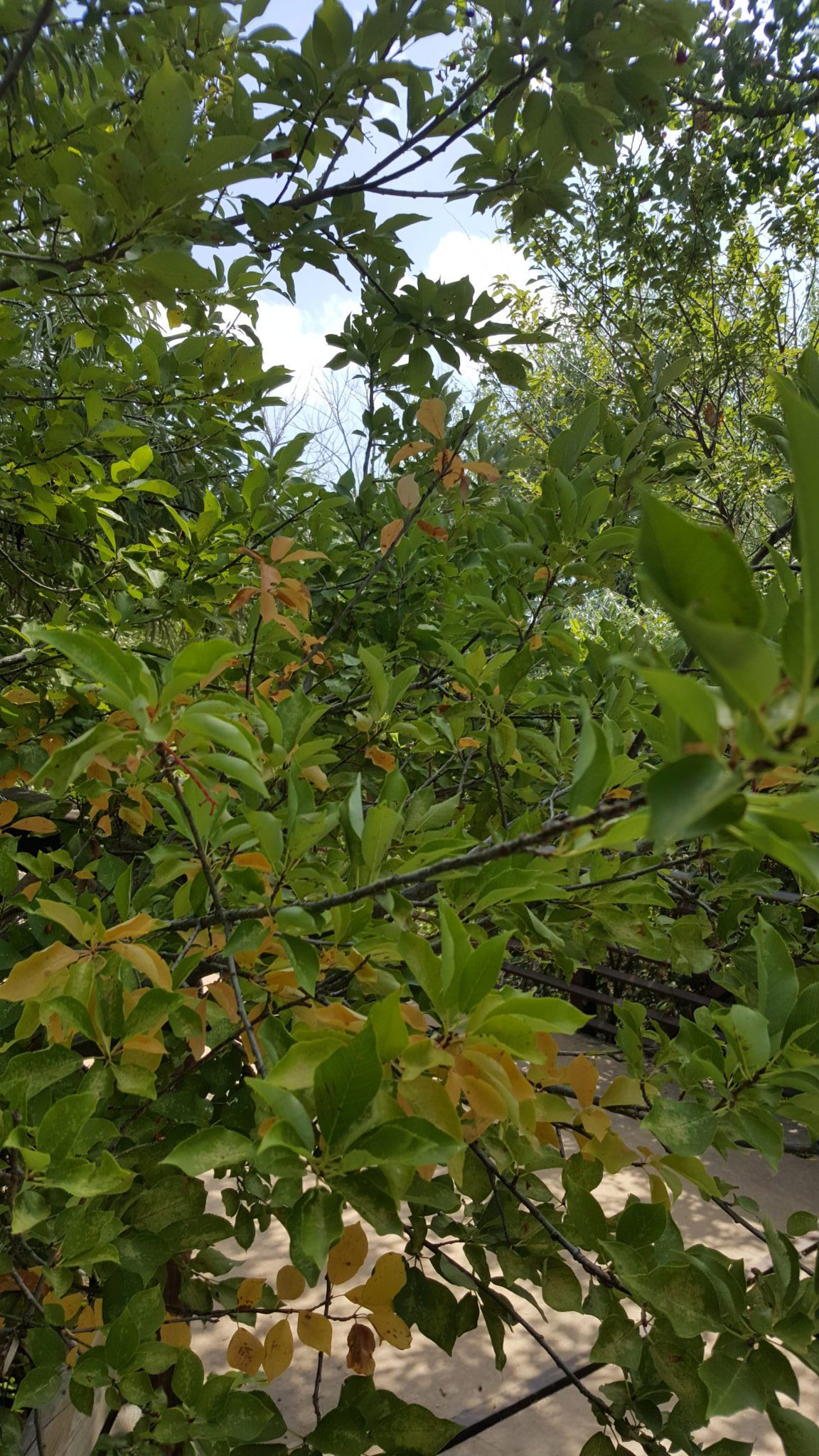
Also subtly, the leaves on the trees and shrubs begin a transition as well. The vivid green of June and July becomes flat and faded in August. An analogy (an admittedly poor one) would be to say that the foliage has gone from a semi-gloss to a matte finish. You might even see some leaves already turning to their autumn colors before the month is over.
There is something different in the sound of the leaves as well. What I mean is this: by the end of August when the wind blows through the trees, the leaves are starting to sound dry. Instead of rustling softly in the breeze, they rattle!
Renovation updates:
I thought I would post an update about the garden renovations, not just this from year but from the past couple of years as well..
Below is the section that MrsVintage and I renovated two summers ago. There used to be nothing but a plastic shed in this spot. This is also the section that the cable company tore up this past winter.
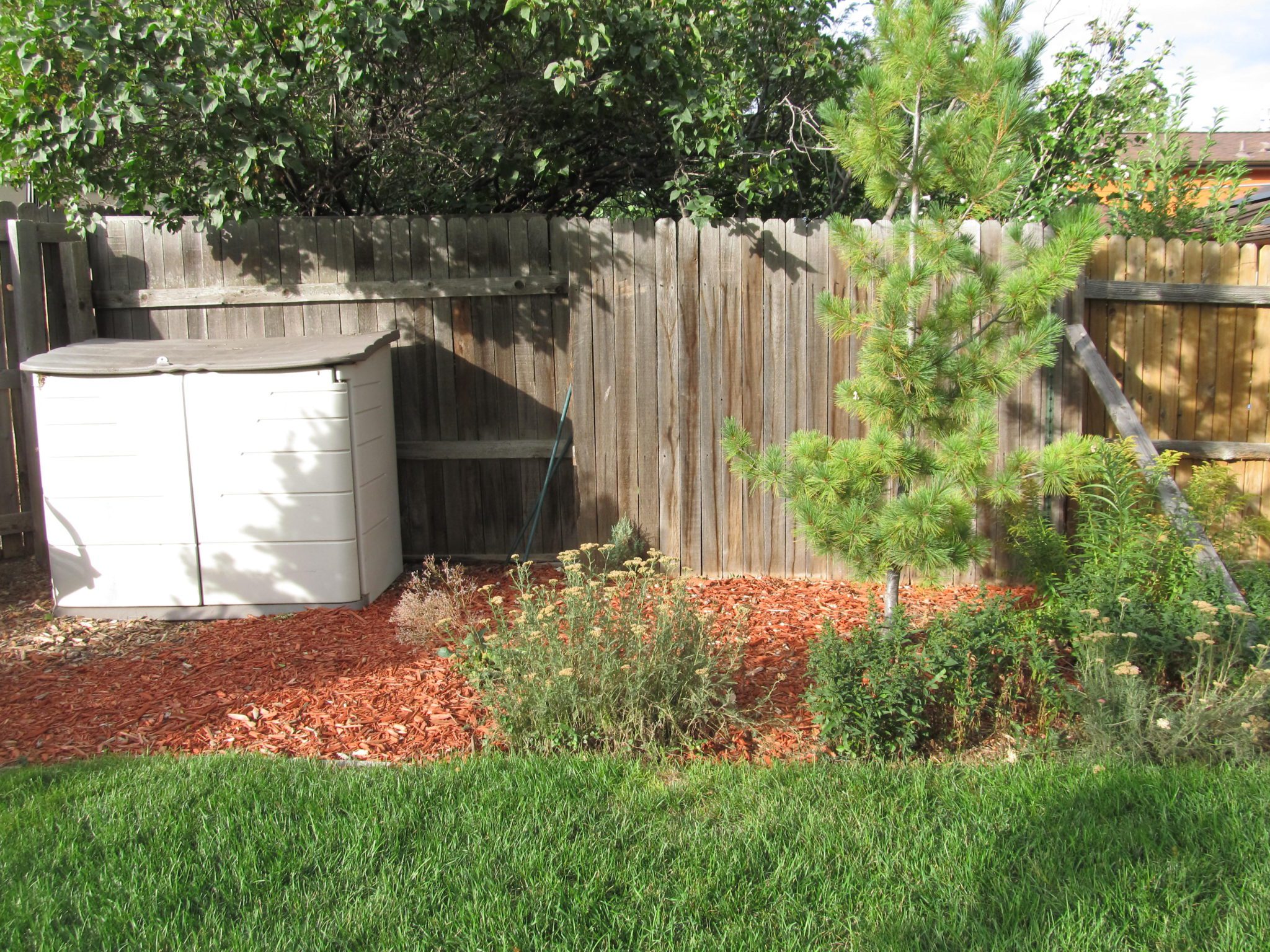
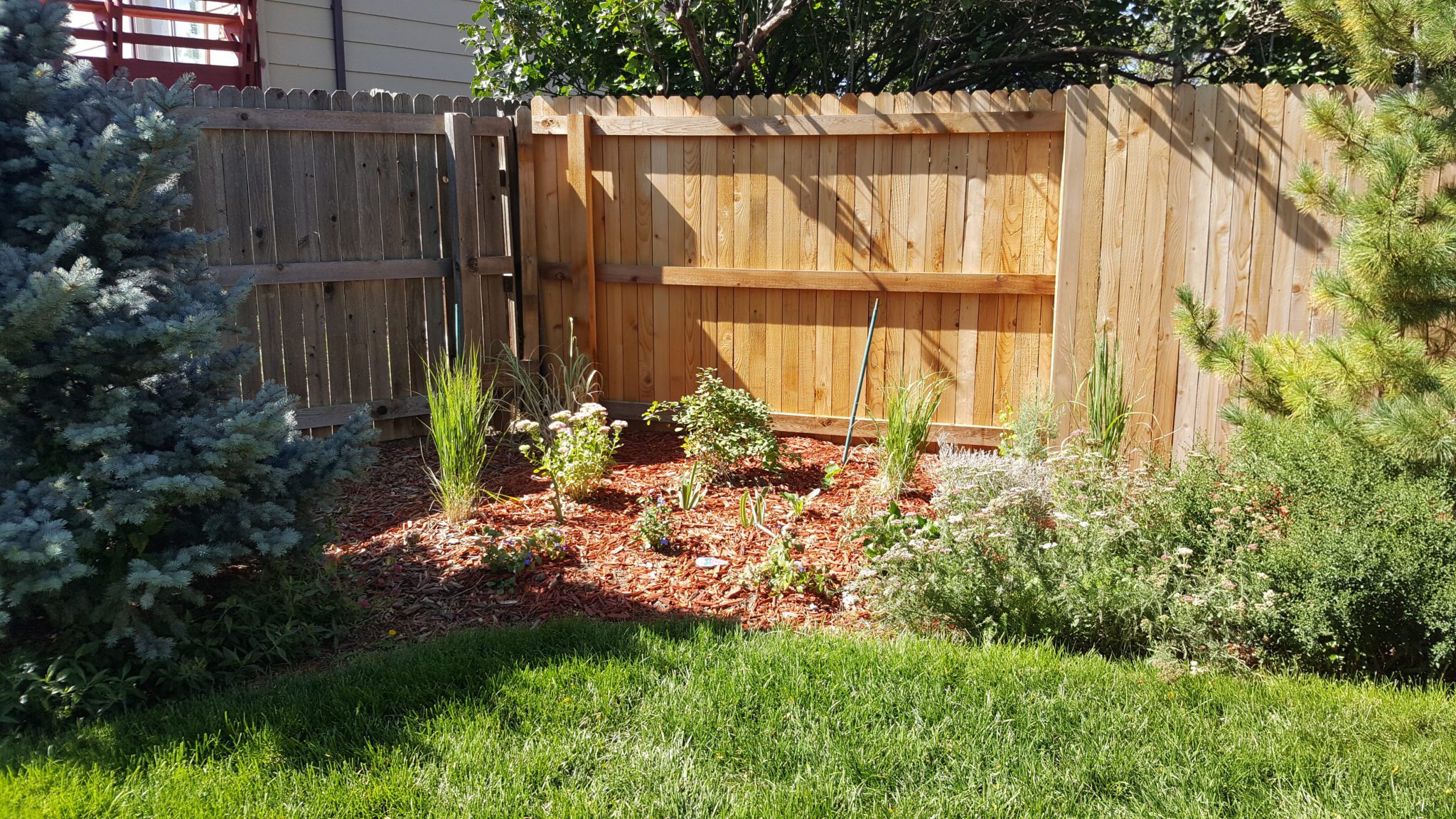
Below is the section this past spring. The blue columbines perfectly match the blue irises. I wish I could say I planned this, but it was just luck.
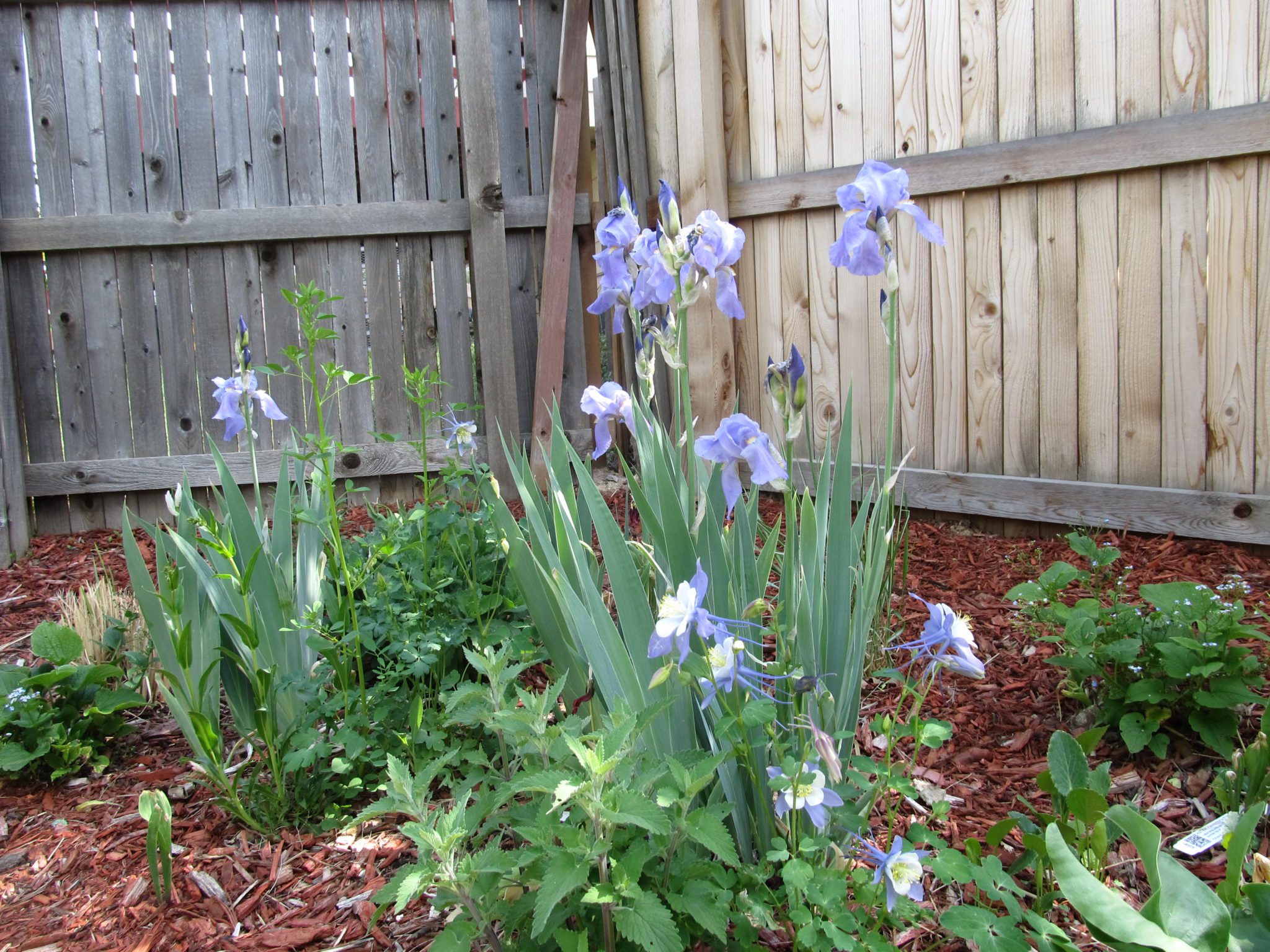
I took this picture below last week. The plants have had two years to fill in (except the ones that were ripped out of the ground by the cable company) and overall they look healthy. But I’m not completely satisfied with this section. There’s just something missing; there’s no “oomph”. I’m not going to mess with it this year, but will ponder possible solutions over the winter.
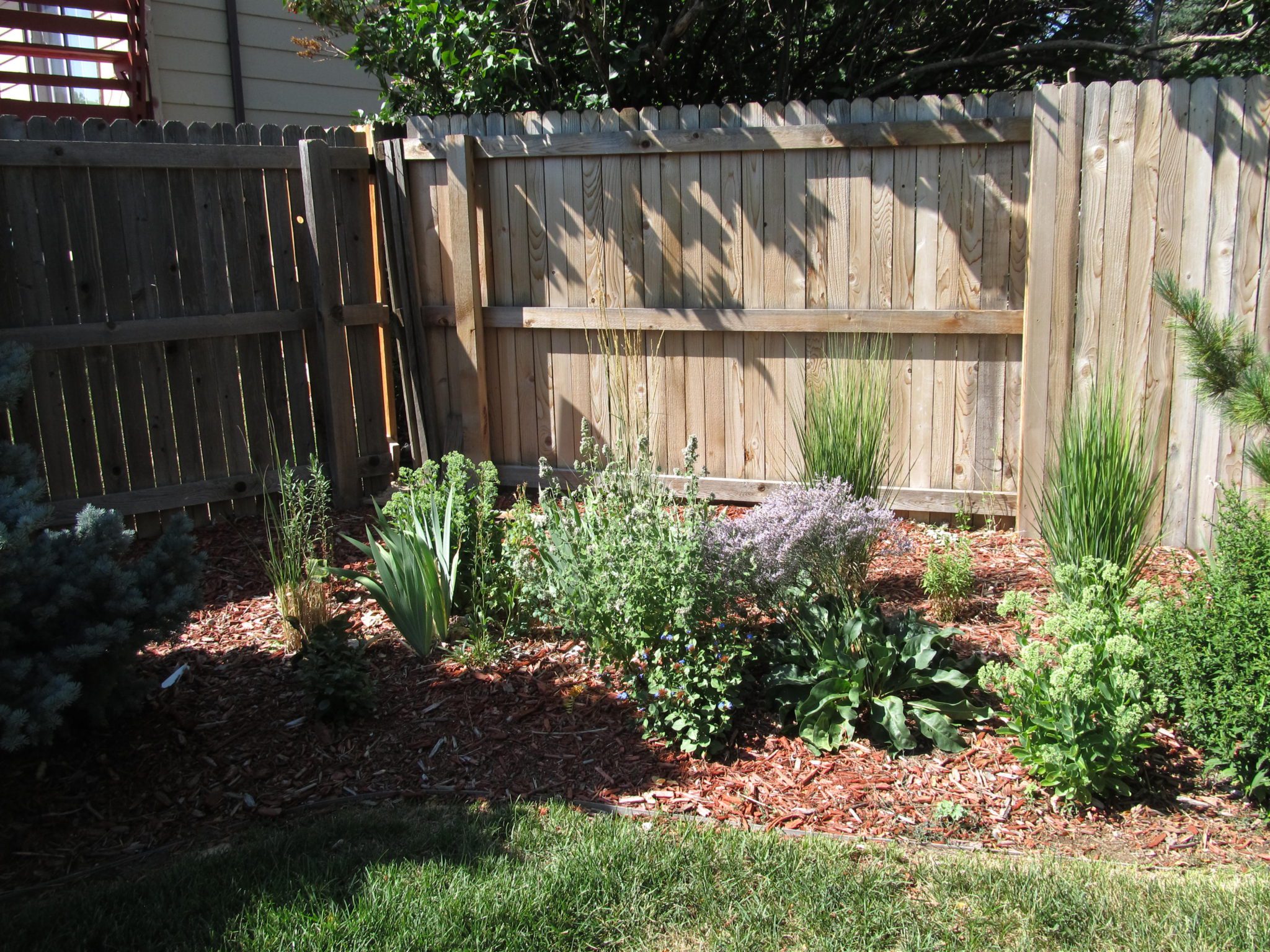
Now to the birdbath garden. This is the section that I pulled the dying serviceberry out earlier this spring. Below is the initial planting…
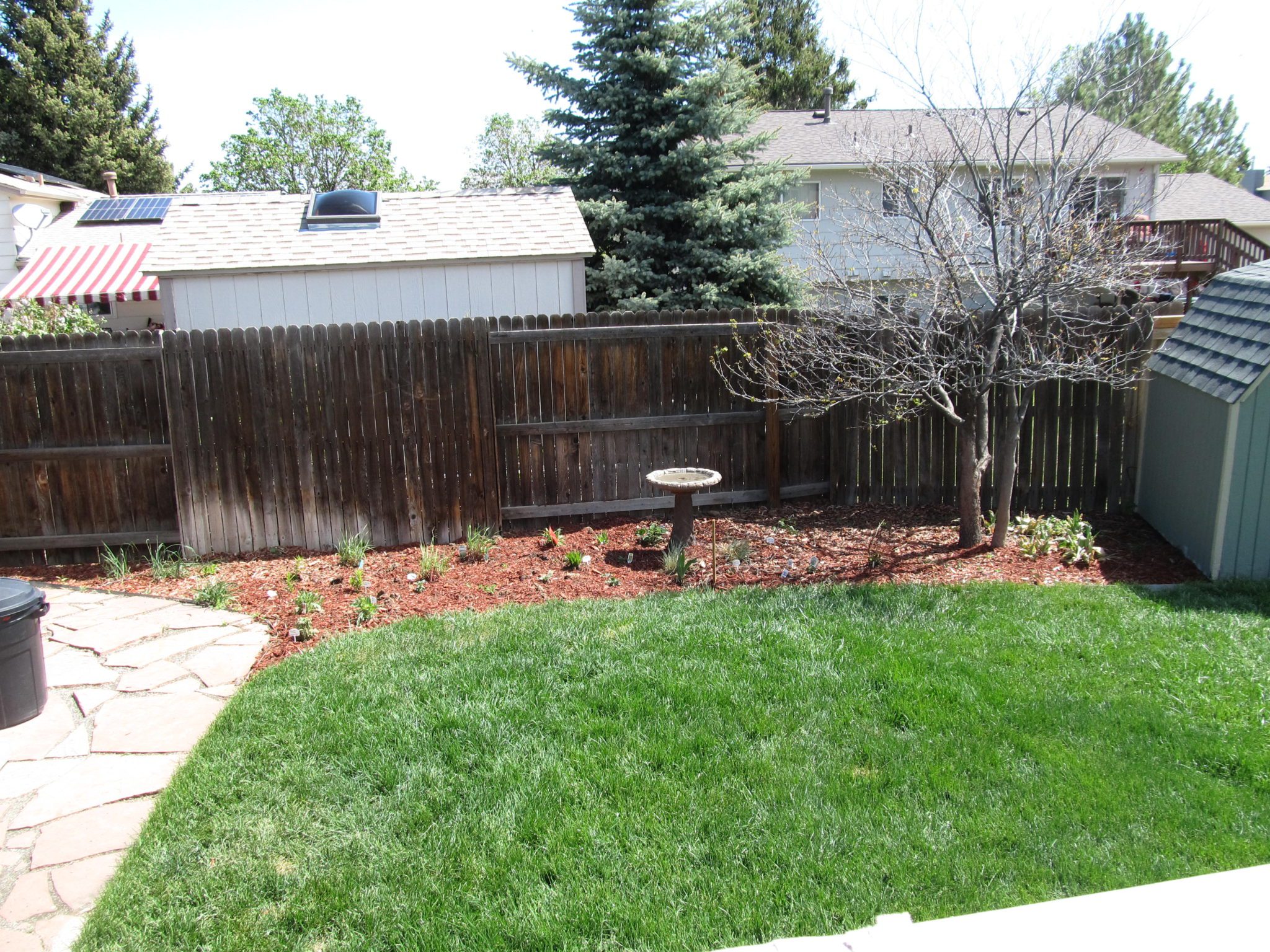
And now. Most of the plants survived the ravenous rabbit onslaught from May and June and are looking fine. I sowed some sunflower seeds just so the area would look a little more established. Barring any more herbivore destruction, this section should look awesome next year.
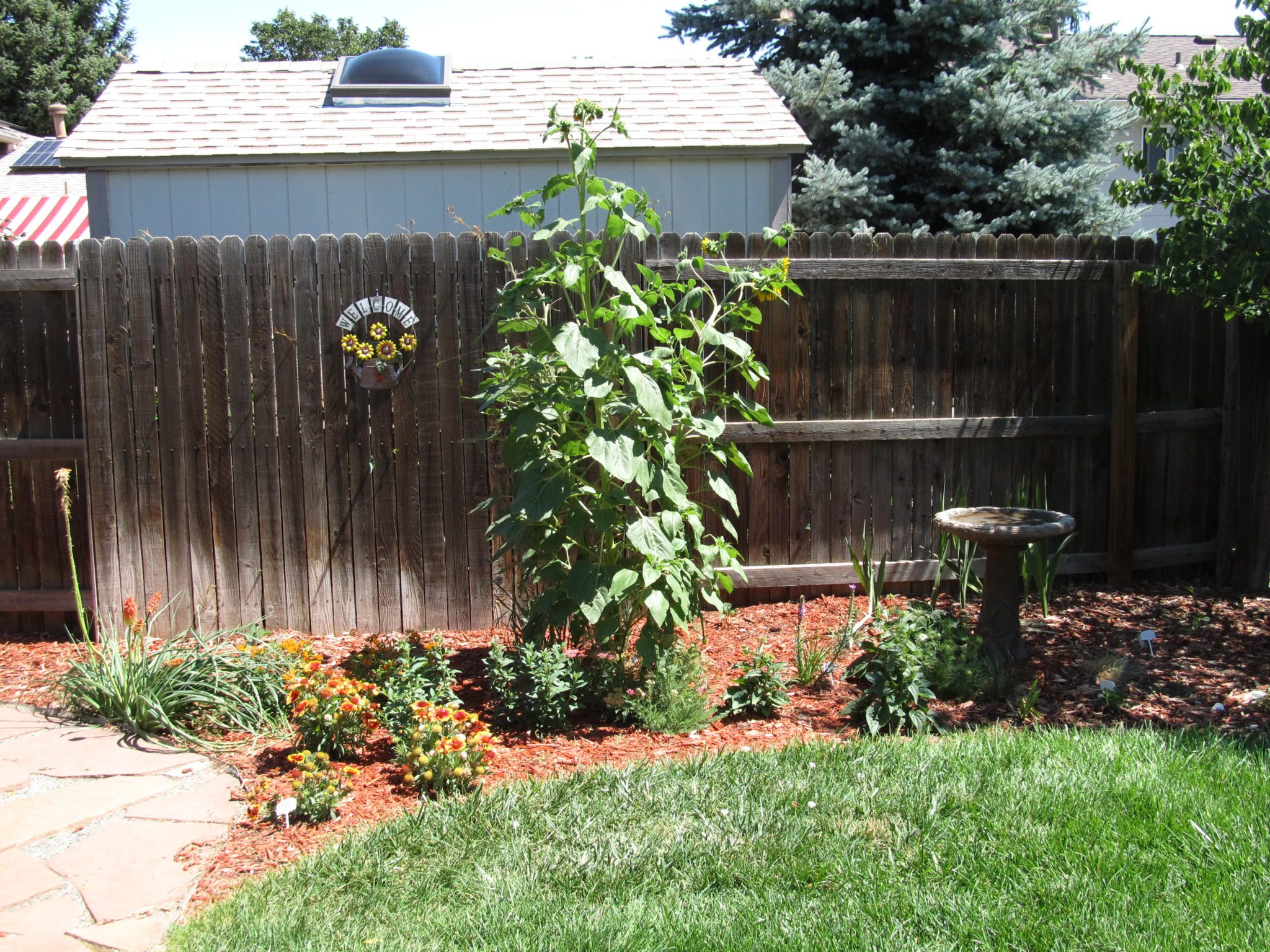
Now to what used to be the old veggie garden. This was the section that I used to grow tomatoes and pumpkins in. I found the hassle of veggie garden more work than it was worth, so the area lay fallow for several years until last summer when we put in a new perennial bed.
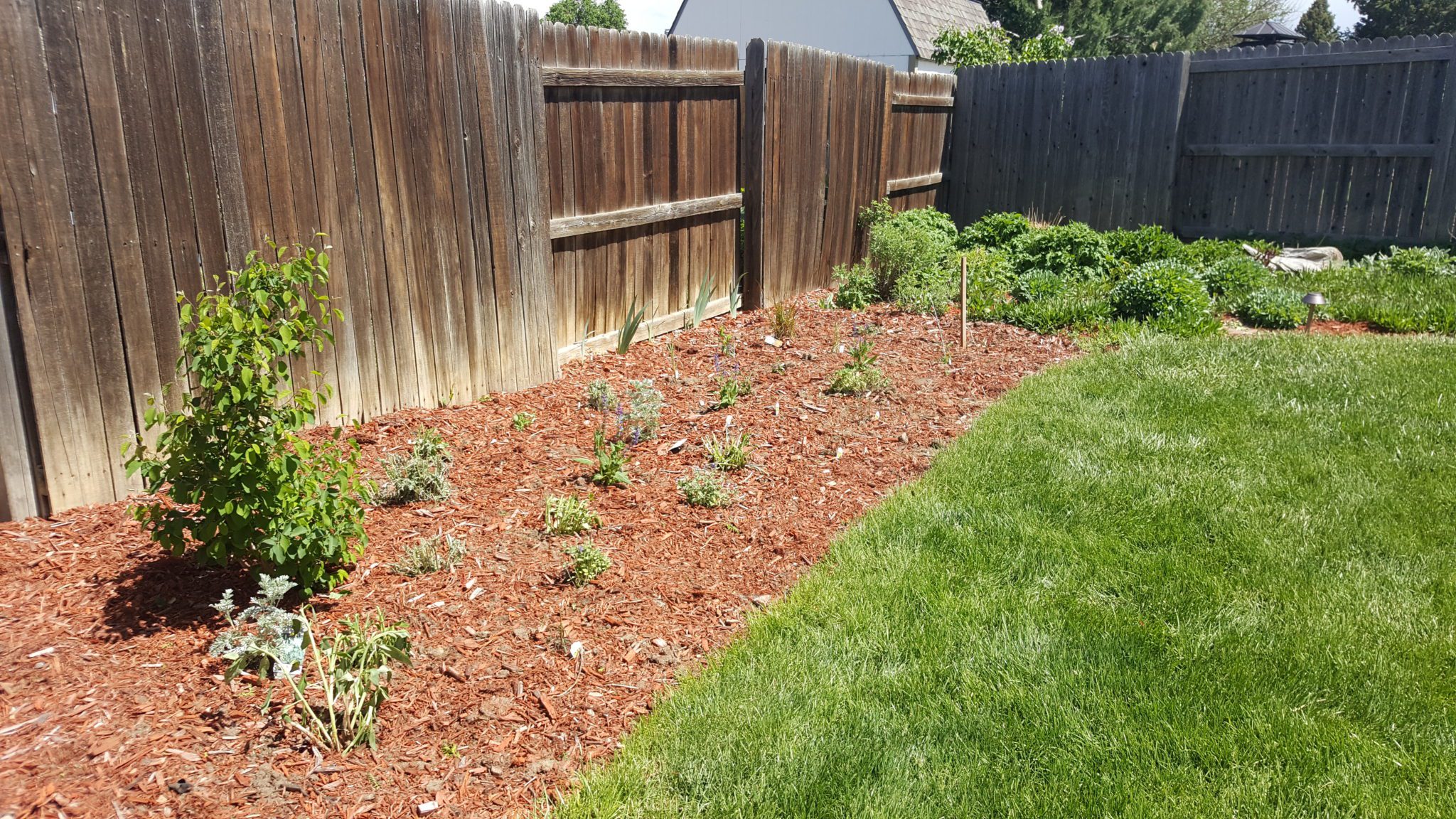
I like to cluster plants that bloom around the same time together to maximize the visual impact. This section is my “early summer” border so it is well past it’s peak. But it is still looks good and is filling in nicely.
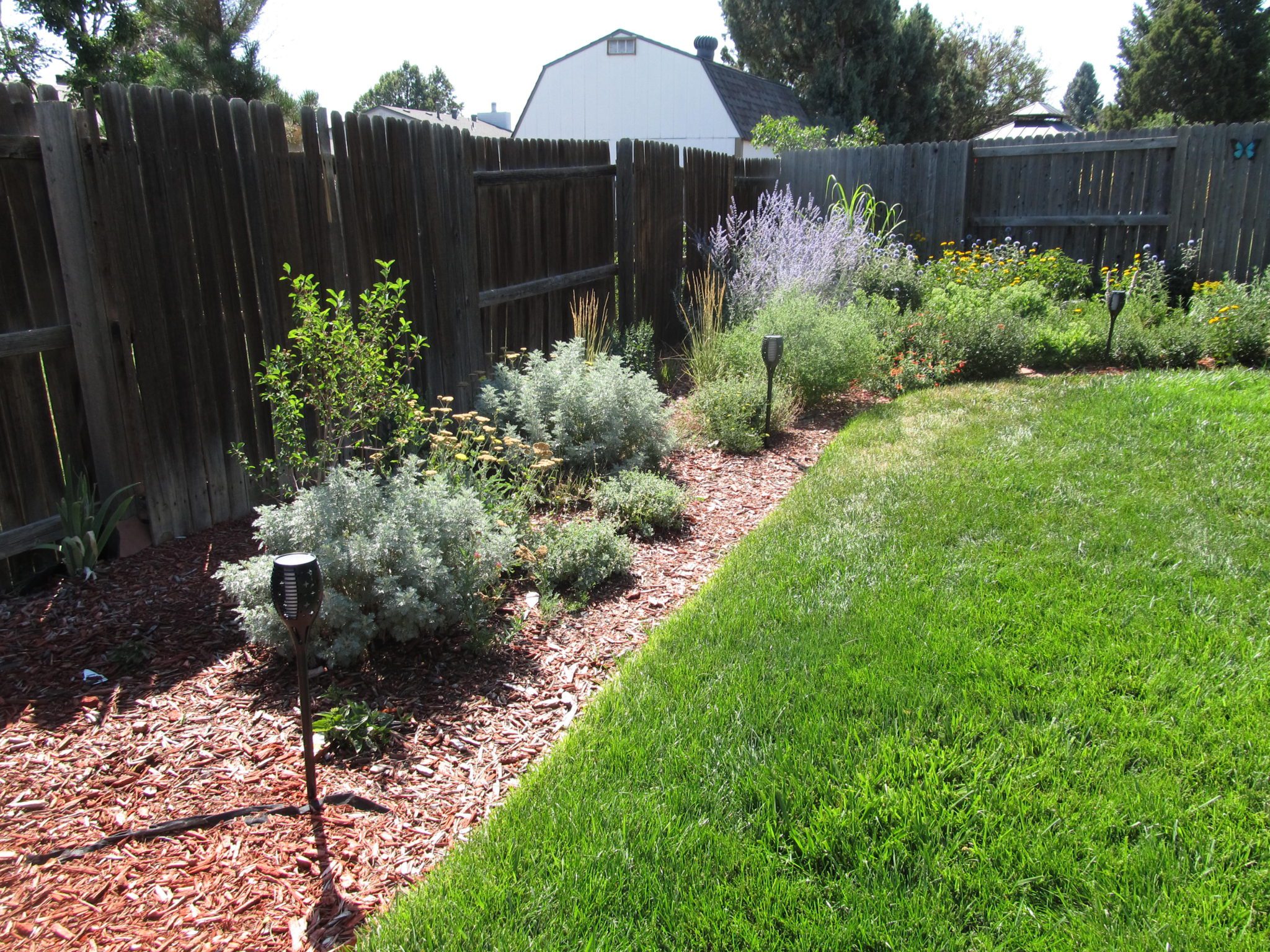
Here’s the “desert” garden on the south side of the house that MrsVintage and I put in a few months ago.

As you can see, it is performing beautifully. I no longer need to water this area as these drought hardy plants have already established themselves. I’m really excited to see how it does next year.
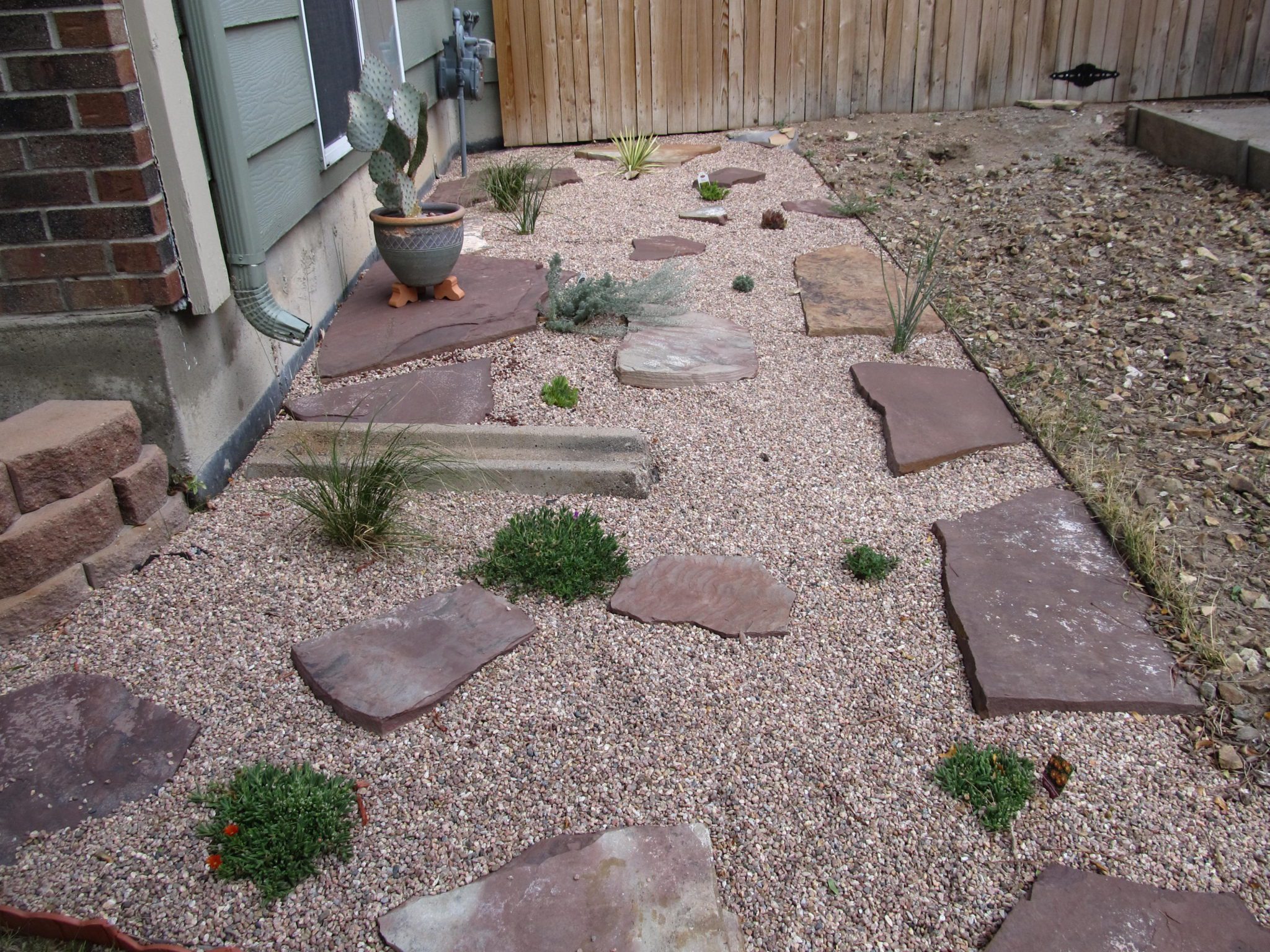
Below is a pic from last year of my lawn going dormant in the August heat:
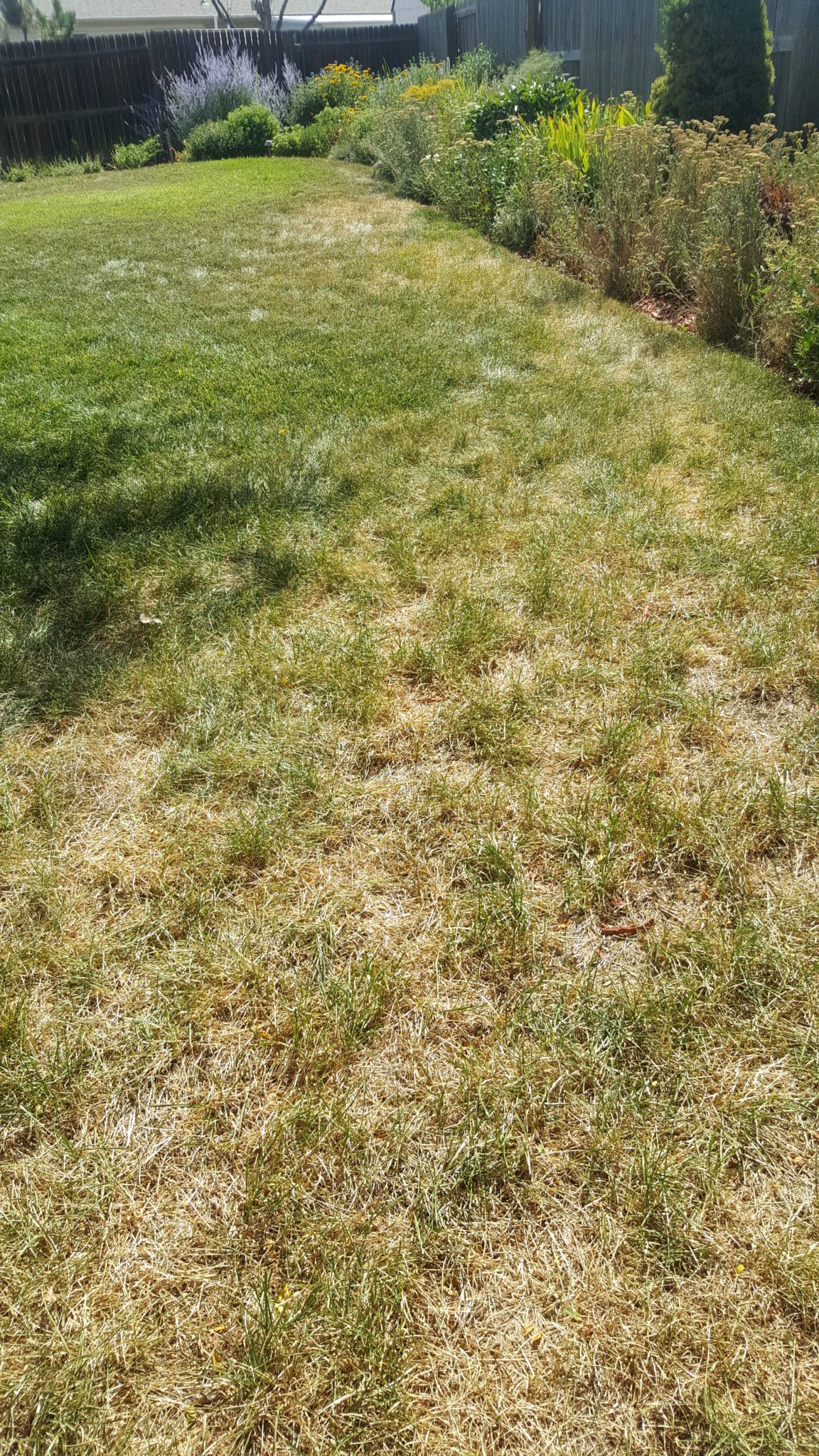
I’m happy to report that the lawn is handling the heat and drought much better this year. I think that putting compost down on the lawn in early spring helped. I also applied a iron/sulphur mix back in late June that helped keep the lawn green. But I think the biggest factor was watering the lawn more efficiently than I have in years past.
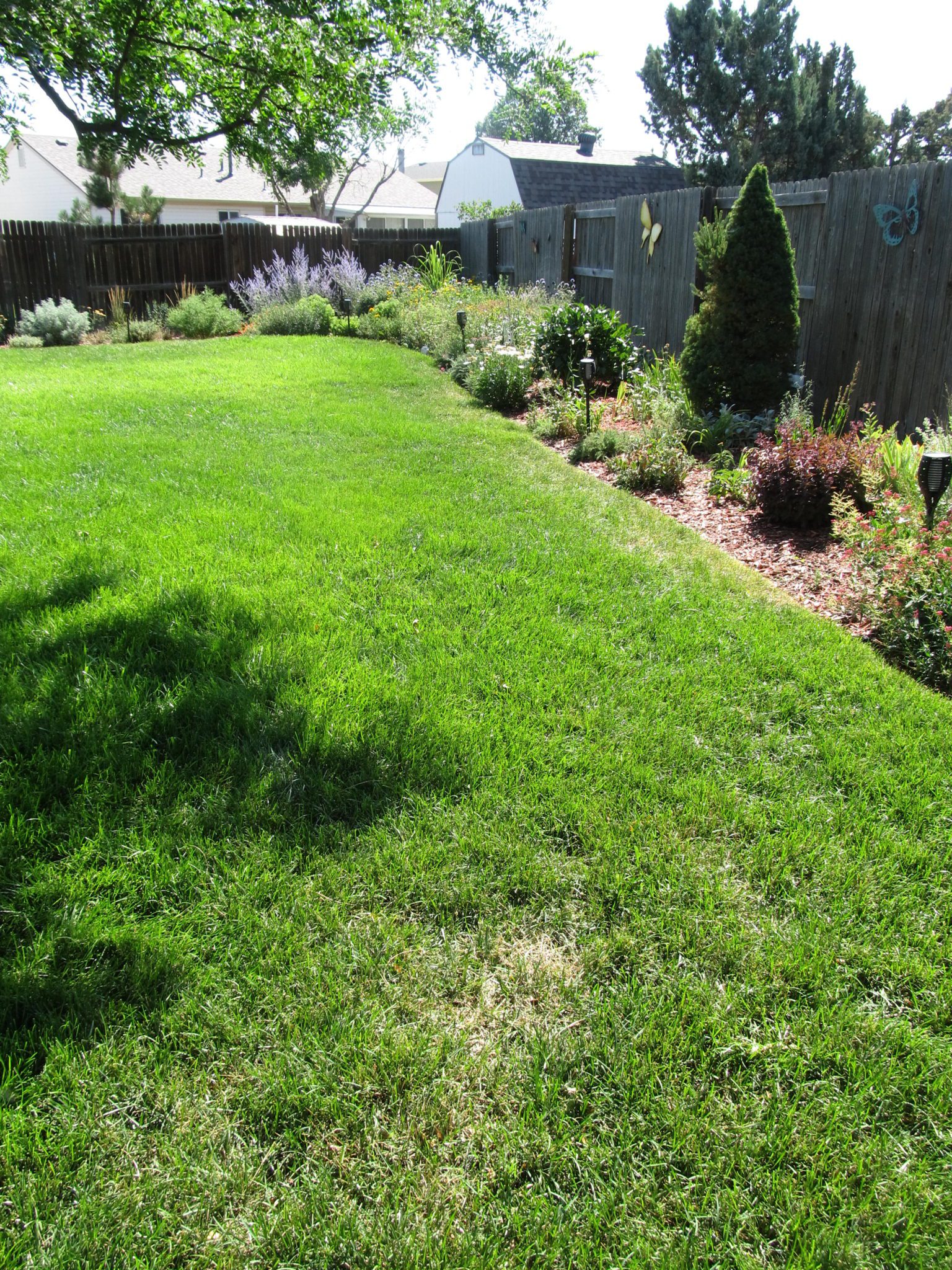
What are your feelings about August, especially this year?
* Since I no longer grow veggies, I cannot unfortunately post any pictures to show this.

